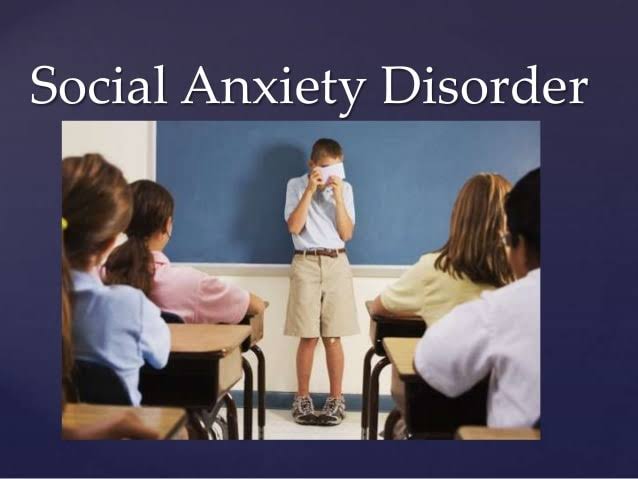Certain individuals need to interface however don’t dare. They are modest or really have a fear of others’ decisions and in this way stay away from social contact. In any case, for what reason would we say we are how we are and would we be able to change our social requirements and fears?
Most of individuals might feel awkward or restless in specific social circumstances. This sensation is regularly known as timidity. A more clinical term for it is social uneasiness. As indicated by therapist Erik Hedman, a scientist at the Department of Clinical Neuroscience, there is not all that much or neurotic with regards to this by any stretch of the imagination. It is a vibe that stems from a dread of being judged (and in the most pessimistic scenario censured) by others. It presumably has a transformative clarification.
“Social nervousness is one of our most boundless tensions. On a basic level, everybody has felt a dread of being investigated by others or of showing up before a gathering. This stems from a dread that we will some way or another effectively avoid us from the gathering. For our progenitors, having a place with the gathering was something that expanded their odds of endurance, as it actually is for us today,” says Erik Hedman.
When checked out according to this viewpoint, social tension is utilitarian. In any case, for some’s purposes, the nervousness turns out to be excessively strong such that it forms into a fear. The distress then, at that point, turns out to be excessively serious such that it makes restrictions day to day existence. This might include not getting schooling or declining energizing propositions for employment because of a paranoid fear of being needed to talk before others. It can likewise include automatically living alone on the grounds that it is so difficult to connect with a possible accomplice. ‘Wellbeing practices’ are additionally normal for social uneasiness problem and incorporate such things as remembering in exactly the same words what you intend to say or drinking liquor prior to setting out to connect.
Social tension issue is unequivocally associated with sensations of disgrace, a judgment of oneself. This is demonstrated by a review that Erik Hedman has directed along with his associates. The review shows that when individuals with social uneasiness issue get intellectual conduct treatment (CBT), their sensations of disgrace decline.
There are different examinations that depict how disgrace might be a significant factor in friendly circumstances. For instance, people are seen all the more thoughtfully in case they are embarrassed about their conduct when they have disregarded social principles somehow or another, maybe by burping noisily. Seeming indifferent subsequent to having burped causes somebody to seem undesirable. Different investigations show that in the event that we remain with just a single portion of our face towards a group of people, that side of the face reddens more than the side the crowd can’t see.
“Becoming flushed or in any case demonstrating disgrace is unmistakably significant in showing that we acknowledge the social standards and recognizing that we have abused them. This is something that has all the earmarks of being more grounded in people with social tension issue,” says Erik Hedman.
Web treatment successful
It is feasible to successfully treat social uneasiness problem with CBT. Curiously, it works regardless of whether the patient doesn’t meet the therapist up close and personal. Treatment through the web is similarly just about as successful as standard gathering treatment with CBT. What’s more, the outcomes are enduring, as per a five-year follow-up study led by Erik Hedman.
“Expanding age is associated with further developed result. The treatment is most appropriate to the people who are more established, and apparently more adult, who can take a lot of liability regarding their own treatment. Normally, the treatment is best in case it is really led as planned, i.e., if the patient challenges to challenge their own social feelings of trepidation,” says Erik Hedman.
“Social attractiveness”
Around ten years prior, a Swedish report was directed in which individuals with social tension problem were explored with a PET scanner while they read a text before a group of people. Blood stream was estimated by infusing radioactive markers into it, which gives data concerning which regions are dynamic. A lot of action was found in the amygdala. When these individuals had been effectively treated with CBT or drugs, they were approached to show up; this time there was less action in the amygdala.
Notwithstanding, these examinations don’t give a sign of which biochemical cycles occurred in the minds of the review subjects. Specialist therapist Simon Cervenka, analyst at the Department of Clinical Neuroscience, is searching for the response to this inquiry. He has examined the dopamine frameworks of solid exploration subjects and patients with social uneasiness issue. These examinations are additionally led with a PET scanner, however this time with the assistance of tracer intensifies that tight spot to specific receptors in the mind, something that makes it conceivable to quantify the thickness of receptors in various pieces of the cerebrum. Simon Cervenka and his associates have so far predominantly been keen on the dopamine receptor D2.
Simon Cervenka depicts an American review that had a major effect on him when it showed up in 2002. This review researched the frequency of D2 receptors in monkeys. When monkeys lived alone in individual enclosures, they all had about similar degrees of D2 receptors. However, when they were moved into a solitary gathering in one enclosure, some of them acquired extra D2 receptors these were the prevailing, forceful pioneers.
“This review made me exceptionally intrigued by what sort of organic premise there is intended for social conduct. I needed to check whether it was feasible to explore the job of dopamine frameworks in people,” says Simon Cervenka.
The principal results were distributed a couple of years prior. They portray the occurrence of D2 receptors according to a specific person attribute: “social attractiveness”. This is a person quality that includes a smooth conduct, with the singular taking a stab at congruity in the gathering.
“Social similarity was likely significant for our precursors in specific settings. This is connected to the degree we endeavor to be enjoyed by the gathering. There is a component of accommodation, however I likewise accept that there are parts that touch on friendly abilities,” says Simon Cervenka.
A more noteworthy number of D2 receptors
The consequences of the review were similarly as those in the monkey study. Individuals with high qualities on the size of social similarity, i.e., extremely consistent individuals, had not many D2 receptors. A more predominant, cold and forceful disposition suggested a more noteworthy number of D2 receptors.
In a later report, nine individuals with social uneasiness problem were explored prior and then afterward they were treated with CBT. The patients who were relieved of their uneasiness issue acquired extra D2 receptors. The more noteworthy the adequacy of the treatment, the more prominent the increment in the radioactive mixtures’ limiting to the receptors.
Hence, toward one side of the scale there are the D2-lacking and incredibly agreeable people, who happily help other people and who are gracious even towards a terrible individual. The reason for this is a craving to be acknowledged by individuals around them, which is like the dread of analysis found in individuals with social tension issue.
At the opposite finish of the scale are those with plentiful D2, whose qualities incorporate predominance, forcefulness and chilliness.
At the limit of this gathering we discover individuals who show psychopathic characteristics. A maniac is likewise what you would discover when searching for something contrary to somebody with social tension problem.
“An individual with social nervousness problem has an overstated affectability and a dread of how they will be seen. Insane people, then again, couldn’t care less with regards to this the slightest bit, rather they are not interested in others’ perspective on them as long as their own objectives are not undermined,” says Erik Hedman.
Therefore, a maniac will doubtlessly never request treatment for their conduct, something that individuals with social uneasiness issue do on the off chance that they dare.

